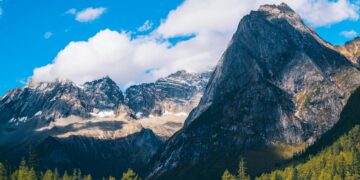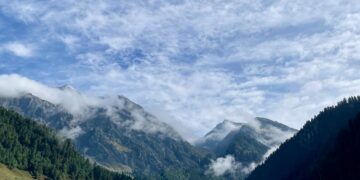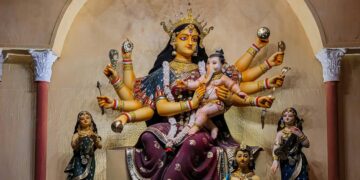Sikkim Tourism: A Real Window into the Himalayan Serenity
Tucked away in the northeast corner of India, Sikkim Tourism offers more than postcard views and snowy peaks. It’s a place where spirituality, culture, nature, and history quietly shape every village, trail, and mountain pass. This article is not a travel brochure—it’s a real take on what Sikkim Tourism means to travelers who care about depth, authenticity, and grounding experiences.
A Compact State with a Big Cultural Heart
Sikkim is one of India’s smallest states by area, but it holds enormous cultural value. With a population made up of Lepchas, Bhutias, and Nepalese communities, Sikkim is a melting pot of languages, customs, and faiths. If you’re looking to understand the human fabric of the Himalayas, Sikkim is your best window.
Buddhism plays a central role in local life. From monasteries perched on cliffs to prayer flags fluttering along narrow roads, you’ll find signs of deep spiritual grounding everywhere. While Gangtok is the capital and the starting point for most trips, real insights into Sikkim Tourism often come from time spent in places like Ravangla, Yuksom, or Dzongu.
Real Places That Define Sikkim Tourism
1. Gangtok: A Balanced Introduction
Gangtok isn’t just a city—it’s Sikkim’s mind and movement center. Modern cafés sit next to centuries-old shrines. Visit Enchey Monastery, stroll MG Marg, or take a cable car ride with views of the valleys. For most, it serves as a practical base before venturing further, but don’t skip its cultural depth.
2. Tsomgo Lake: Where Nature Reflects Faith
Around 40 km from Gangtok, Tsomgo Lake is not just scenic—it’s sacred. At 12,000 feet, it stays frozen through the winter. Locals believe the lake’s changing colors are a spiritual sign, and the nearby Baba Harbhajan Singh Mandir adds a layer of folklore to the place.
3. Nathula Pass: Where Borders Speak Volumes
Part of the ancient Silk Route, Nathula connects Sikkim to Tibet. It’s also one of the few border crossings open to Indian civilians (with a permit). Here, Sikkim Tourism becomes a lesson in geopolitics, trade history, and altitude survival all at once.
4. North Sikkim: Lachung, Lachen, and Yumthang
This region redefines raw nature. Lachung and Lachen are small mountain towns that serve as gateways to Yumthang Valley—also called the Valley of Flowers. Hot springs, snow-covered valleys, and barely touched landscapes make this part of Sikkim Tourism a must for those seeking silence and scale.
5. West Sikkim: Yuksom and Pelling
Yuksom is historically important—it was the first capital of Sikkim and the site of its first Chogyal’s coronation in the 17th century. Trekking routes to Dzongri start here. Nearby Pelling offers a quieter alternative to Gangtok, with views of Kanchenjunga and old monasteries like Pemayangtse.
6. South Sikkim: Ravangla and Namchi
South Sikkim focuses more on peaceful mountain living. Visit the Buddha Park in Ravangla, which houses a 130-foot statue of the Buddha and stunning Himalayan views. Namchi features the towering statue of Guru Padmasambhava, an important Buddhist figure in Sikkim’s faith landscape.
Unique Experiences That Give Sikkim Tourism Its Soul
Home Stays with Mountain Families
Forget luxury resorts. The real essence of Sikkim Tourism is in staying with local families. Home stays in places like Dzongu or Hee Bermiok give you a taste of local food, customs, and stories. You’re not just a visitor—you become part of the daily rhythm.
Trekking Without the Crowds
Sikkim is a trekker’s haven, but it doesn’t shout about it. Routes like Goechala Trek give you close views of Kanchenjunga, while Dzongri is a shorter trail with stunning meadows and views. These are not overrun by crowds, making them ideal for serious walkers and nature-minded souls.
Festivals That Still Feel Local
Events like Losar (Tibetan New Year), Pang Lhabsol (celebration of Mount Kanchenjunga), and Saga Dawa (commemorating Buddha’s life events) are not stage-managed spectacles. They are community-rooted celebrations where tourists are welcome but not catered to artificially.
Food That Speaks the Mountain’s Language
Think beyond momos. Sikkimese food includes dishes like Phagshapa (pork with radish), Gundruk (fermented leafy greens), and Chhurpi soup (made from yak cheese). Most meals are seasonal and locally sourced, making them healthy and aligned with mountain life.
Sikkim Tourism Permits: What You Should Know
Sikkim is sensitive—not just geographically but politically and ecologically. Several areas, especially North Sikkim and the borders near China, require permits. Indian citizens need Inner Line Permits (ILPs), while foreign nationals often need Restricted Area Permits (RAPs). Always check current rules before you travel. Most permits are easily available in Gangtok through travel agents.
Sustainability Is Not a Buzzword in Sikkim Tourism
Sikkim banned plastic bags way before it became popular to do so. It’s India’s first fully organic farming state, which means the vegetables you eat are grown without chemicals. Tourism here is designed to fit the environment, not the other way around.
Stay on trails, avoid littering, and respect local customs—not because it’s trendy, but because Sikkim Tourism depends on it. Local communities are deeply involved in shaping how tourism grows, and that keeps the region grounded.
Weather and Timing for Sikkim Tourism
Spring (March to May): Rhododendrons bloom, and skies are clear. This is trekking season.
Summer (June to August): Rain can cause landslides. Good for lower altitude visits, but higher areas may be restricted.
Autumn (September to November): Clear views of the mountains and major festivals. Ideal for most travelers.
Winter (December to February): Snowfall in the north and upper elevations. Suitable for snow lovers and peaceful retreats.
Each season shows a different face of Sikkim. Plan according to what you value most—green valleys, snowy trails, or spiritual silence.
How to Reach and Move Around
Air: The nearest airport is Pakyong (about 30 km from Gangtok), but Bagdogra in West Bengal is used more often due to frequent flights.
Rail: There are no direct railway lines to Sikkim. The nearest station is New Jalpaiguri (NJP), around 120 km from Gangtok.
Road: Sikkim has well-connected roads from Siliguri, Darjeeling, and Kalimpong. Shared jeeps and private taxis are the most common forms of transport within the state.
What Makes Sikkim Tourism Different from the Rest?
- It’s not built for mass consumption.
- It respects the land and the people.
- It’s focused on real experiences over flashy itineraries.
- Every place has a story, and every local is a quiet storyteller.
If you’re someone who values calm over chaos, insight over Instagram, and meaning over marketing, then Sikkim Tourism will feel like home—even if you’re only here for a week.
Responsible Travel Tips for Sikkim Visitors
- Do not photograph monks or locals without permission.
- Dress modestly, especially when visiting monasteries.
- Carry your waste back if you’re in remote areas.
- Support local guides, weavers, and farmers by choosing them over big-ticket providers.
- Keep your voice down—both in nature and in sacred sites.
Respect is the key currency in Sikkim. Spend it generously.
Final Thought: Sikkim Tourism Is a Relationship
This is not the kind of destination that gives itself away in a day. You have to listen. To the prayer wheels, to the wind over Yumthang, to the stories of yak herders and monks. In return, Sikkim doesn’t entertain—it connects.
Sikkim Tourism is not about checking boxes. It’s about unchecking everything else and just being where you are. If that’s what you’re looking for, you’ve already made the right decision.



















